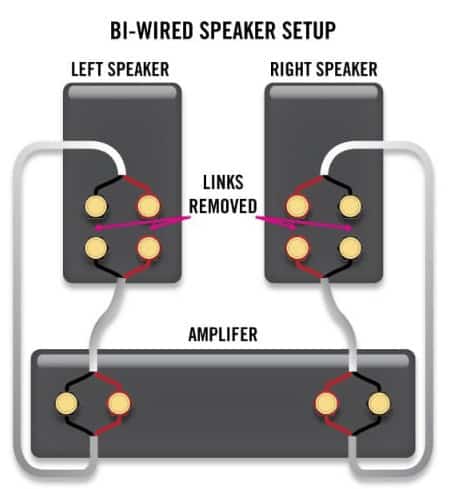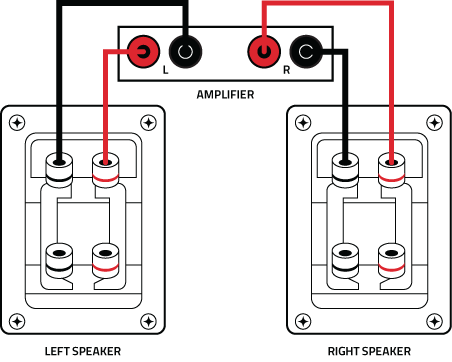Unlock Your Audio: A Comprehensive Guide To Bi-Wiring Speakers For Enhanced Sound
Are you an audiophile constantly seeking to squeeze every last drop of performance from your sound system? Or perhaps you've just noticed your speakers have an extra set of terminals and wondered what they're for? If so, you've likely stumbled upon the concept of bi-wiring. It might sound like a complex, high-tech modification, but in reality, it's a pretty easy setup, and I'll help you out with what it is and how to do it, guiding you through the process of unlocking a potentially cleaner and more refined sound from your existing setup.
What Exactly is Bi-Wiring?
Before we dive into the "how," let's clarify the "what." When you look at the back of some high-fidelity speakers, you might notice something unusual: two sets of binding posts instead of the usual single pair. What does it mean when you have two sets of binding posts on your speaker? It signifies that your speaker is designed for bi-wiring. Typically, these speakers come with metal jumpers connecting the two sets of posts, allowing them to function like a conventional single-wired speaker.
In a standard speaker setup, a single pair of speaker cables carries the full audio signal (low, mid, and high frequencies) from your amplifier to the speaker's crossover network, which then divides the signal and sends it to the appropriate drivers (woofer, midrange, tweeter). Bi-wiring, on the other hand, involves using two separate runs of speaker cable for each speaker, effectively creating dedicated pathways for different frequency ranges.
- Uglys Closet
- South County Middle School
- Tim Raus
- Kristen Stewart Rolling Stones Cover Pic
- Zoe Lovee Naked
The Purpose of Dual Binding Posts
These dual binding posts are not just for show. They serve a very specific purpose: to allow direct connection to different sections of the speaker's internal crossover network. One set of binding posts will be used to send the signal to the tweeter (HF - High Frequency) and the other set sends the signal to the mid/bass driver (LF - Low Frequency). This separation is the core principle behind bi-wiring.
Why Consider Bi-Wiring Your Speakers?
The primary goal of bi-wiring is to achieve a cleaner sound. But how does separating the high and low frequencies contribute to this? Here's the theory:
- Reduced Intermodulation Distortion: When a single cable carries the full spectrum of frequencies, the powerful low-frequency signals (like a deep bass drum hit) can induce subtle electrical interference onto the delicate high-frequency signals (like a cymbal crash). This phenomenon, known as intermodulation distortion, can muddy the sound, making it less clear and precise. By giving the high and low frequencies their own dedicated cables, you significantly reduce this interaction.
- Improved Driver Control: With separate paths, the amplifier theoretically has better control over each driver. The woofer, which demands significant current, won't negatively impact the tweeter's performance, leading to tighter bass, clearer mids, and more articulate highs.
- Enhanced Dynamics and Imaging: Many audiophiles report improvements in the speaker's dynamics, with a greater sense of "punch" and impact, as well as a more stable and expansive soundstage. This means instruments and vocals appear more distinct and accurately placed within the stereo image.
What You'll Need Before You Start
Before you get excited and start disconnecting cables, let's make sure you have the right components:
1. Bi-Wireable Speakers
This is non-negotiable. As discussed, your speakers must have two sets of binding posts (four terminals in total) for each speaker. If they only have two terminals, bi-wiring is not an option.
2. The Right Cables
When setting up a bi-wire speaker system, one
- 73520 Highway 111 A Palm Desert California 92260 United States
- Kexin Cai
- Linkin Park Merchandise
- South County Middle School
- Gabriel Jacob Cross

Bi-Wiring and Bi-Amping: The Last Guide You'll Need

How to Bi-Wire and Bi-Amp Stereo Speakers - Full Connection Instructions

How to Bi-Wire and Bi-Amp Home Theater Speakers: What does it mean and